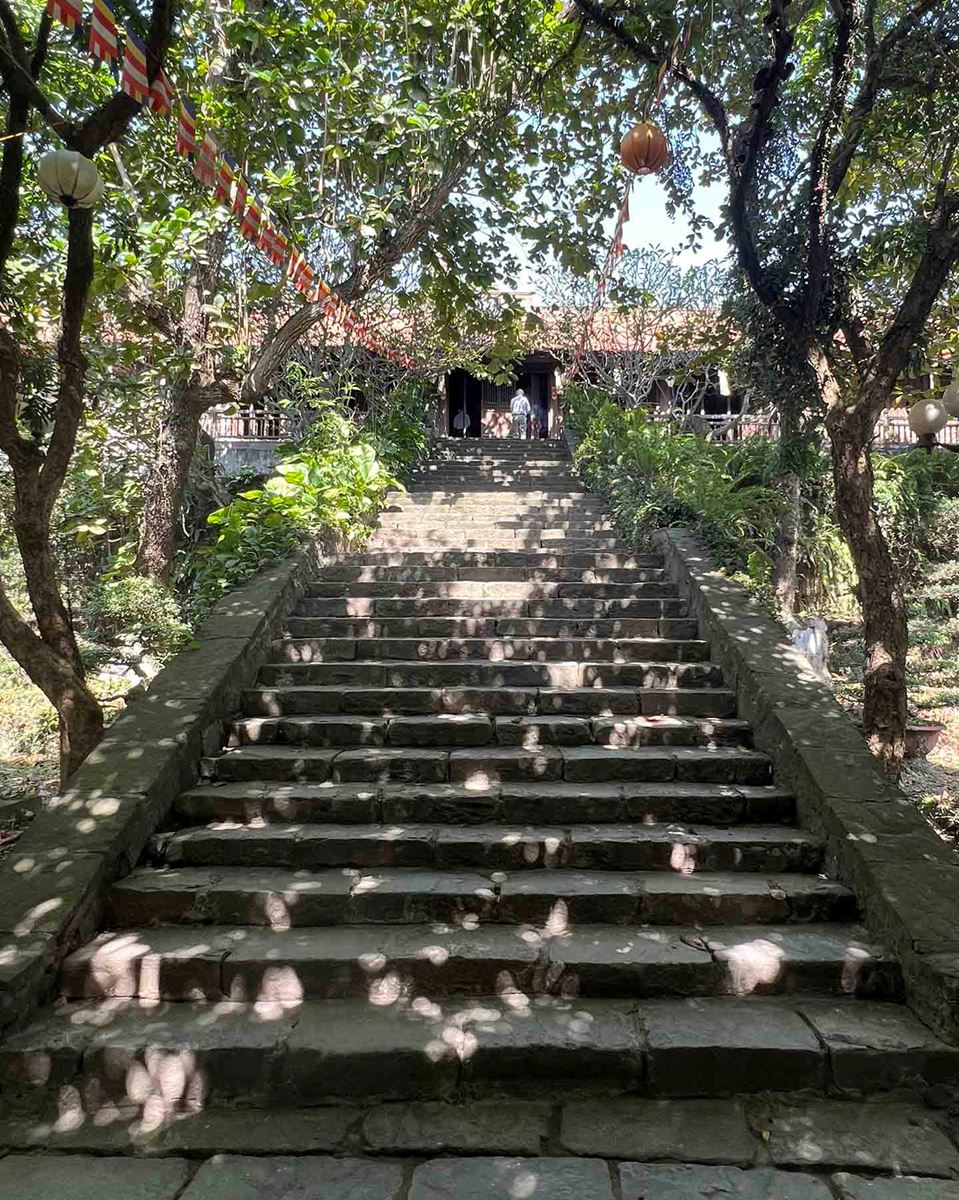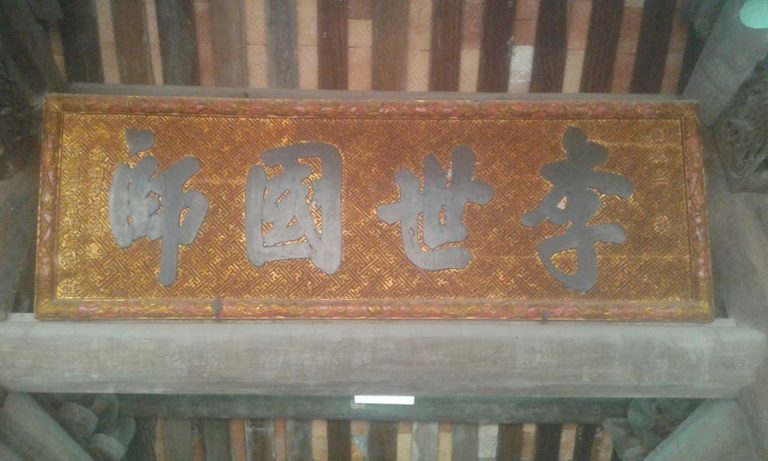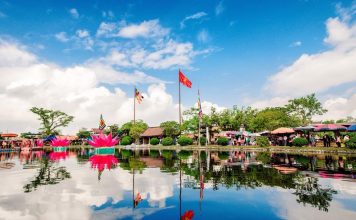According to research by the Provincial Monument Management Board, the existing Keo Pagoda was built exactly 380 years ago (in 1632). However, its ancient origins trace back to a temple named Nghiêm Quang Tự, constructed on the land of Keo village in the year Tân Sửu, during the 3rd year of the Chương Thánh Gia Khánh era (1061) under the reign of King Lý Thánh Tông. In March of the year Đinh Hợi, the 5th year of the Chính Long Bảo Ứng era (1167) during the reign of King Lý Anh Tông, Nghiêm Quang Temple was renamed Thần Quang Pagoda.
In the year Tân Hợi (1611), a devastating flood caused the temple to be swept away. As a result, the residents of the old Keo settlement had to relocate to two areas: one group moved to the southeastern right bank of the Red River (now Hành Thiện village, Xuân Hồng commune, Xuân Trường district, Nam Định province), and the other to the northeastern left bank of the Red River (initially called Dũng Nhuệ, later renamed Dũng Mỹ, Hùng Mỹ, and finally Dũng Nghĩa—now part of Duy Nhất commune, Vũ Thư district, Thái Bình province).
Following the 1611 flood and the community's relocation, Keo village was split into two, with both new villages constructing their own pagodas, each commonly called "Keo Pagoda." One became Keo Pagoda of Nam Định, and the other Keo Pagoda of Thái Bình. In addition to being named after their respective provinces, local people referred to Keo Pagoda in Thái Bình as "Upper Keo" and Keo Pagoda in Nam Định as "Lower Keo," based on the upstream and downstream flow of the Red River—Thái Bình being upstream and Nam Định downstream.
Keo Pagoda in Thái Bình, officially named Thần Quang Tự, was built in 1632 and remains well-preserved to this day. According to inscriptions at the pagoda, it was rebuilt under the leadership of a high-ranking official during the Lê-Trịnh era, Duke Hoàng Nhân Dũng from Tứ Quán village, Hải Thanh prefecture. At the time, the Trịnh–Nguyễn civil war was ongoing, so Lord Trịnh only provided the temple with 100 ironwood logs, while all other materials had to be donated by the local people. Consequently, Hoàng Nhân Dũng spent 19 years (1611–1630) gathering contributions. In July 1630, he managed to assemble 42 skilled craftsmen, and construction commenced. After 28 months of work, Keo Pagoda was completed and officially inaugurated in November 1632.

!["[KTMH] Trailer | WHAT TO DO TO MAKE SUMMER HOLIDAYS MORE MEANINGFUL?"](https://i3.ytimg.com/vi/s0VUGa1v6uw/maxresdefault.jpg)

.jpg)

.jpg)